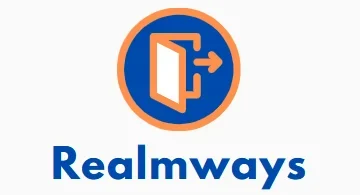You’ve just deposited a check or noticed a strange “hold rel mem cr” message on your bank statement, and now you’re wondering what’s going on. Maybe you saw this term on Reddit or your Chase account, and it’s left you scratching your head. Don’t worry—you’re not alone. Bank holds and pending transactions can be confusing, but they’re a normal part of how banks manage money. In this guide, I’ll break down what these terms mean, why they happen, and how you can deal with them. By the end, you’ll feel confident navigating these financial hiccups.
What Is Hold Rel Mem Cr?
You might have seen “hold rel mem cr” pop up on your bank statement or online banking app, especially with banks like Chase. It’s a cryptic term, but it’s not as complicated as it seems. Let’s unpack it and clear up the confusion.
Decoding the Term
“Hold rel mem cr” stands for “hold released memo credit.” It’s a banking term that indicates a temporary hold on funds has been lifted, and the transaction is now processed as a credit to your account. Essentially, your bank placed a hold on a deposit or transaction, and now it’s cleared, making the funds available.
Why It Appears
This message often shows up after a deposit, like a check or ACH transfer, is processed. Banks use holds to verify funds, especially for large or unusual deposits. Once verified, the hold is released, and you see “hold rel mem cr” on your statement.
Common Scenarios
You might notice this term after depositing a check, transferring money, or receiving a refund. For example, if you deposit a $1,000 check, the bank might hold it for a few days to ensure it clears. Once it does, the hold is released, and the funds are yours.
Reddit Discussions
On platforms like Reddit, users often ask, “What does hold rel mem cr pending mean on Reddit?” It’s a hot topic because the term is vague. Redditors share stories of seeing it on Chase or Bank of America statements, often tied to check deposits or ACH transfers. The consensus? It’s usually a sign the bank has finalized a transaction.
Why Banks Place Holds
Ever wondered why your bank holds funds in the first place? It’s not just to frustrate you. Banks have solid reasons for doing this, and understanding them can help you plan better.
Fraud Prevention
Banks place holds to protect you and themselves from fraud. If you deposit a check, they need to confirm it’s legitimate before releasing the funds. This prevents bounced checks or fraudulent deposits from causing issues.
Regulatory Compliance
Federal regulations, like the Expedited Funds Availability Act, require banks to verify certain deposits. For example, large checks (over $5,000) or new accounts often trigger longer holds to comply with these rules.
Risk Management
Unusual activity, like a sudden large deposit, can raise red flags. Banks hold funds to assess the risk. For instance, if you rarely deposit checks and suddenly deposit $10,000, they’ll likely hold it to ensure everything checks out.
Bank Policies
Each bank has its own hold policies. Chase, for example, might hold a check for 2-7 days, depending on the amount, account history, or deposit method. Knowing your bank’s policy can help you anticipate delays.
| Bank | Standard Hold Time | Large Deposit Hold | New Account Hold |
| Chase | 2-5 days | 7-10 days | Up to 7 days |
| Bank of America | 1-5 days | 7-10 days | Up to 7 days |
| Wells Fargo | 2-5 days | 7-10 days | Up to 7 days |
This table shows typical hold times for deposits at major banks. Always check your bank’s specific policy for exact details.
Why Did Chase Put a Hold?
If you’re a Chase customer, you might be asking, “Why did Chase put a hold on my deposit?” Let’s dive into the most common reasons and what you can do about it.
Large Deposits
Chase often holds deposits over $5,000 to verify the funds. This is standard for checks or wire transfers. The hold ensures the money is available before you spend it.
New Accounts
If your account is less than 30 days old, Chase may place longer holds. This is because new accounts are considered higher risk until you establish a banking history.
Unusual Activity
Deposits that don’t match your usual patterns—like a check from an unfamiliar source—can trigger a hold. Chase wants to ensure the transaction is legitimate.
Check Type
Personal checks, cashier’s checks, or out-of-state checks may have different hold times. For example, cashier’s checks often clear faster, while personal checks might take longer.
In my experience, calling Chase’s customer service can clarify why a hold was placed. They’re usually happy to explain and may even expedite the process if you ask nicely.
How to Get a Hold Removed
Frustrated by a hold on your funds? You’re not stuck. Here are practical steps to get a hold removed from a deposit quickly.
Contact Your Bank
Call your bank’s customer service or visit a branch. Explain the situation and ask why the hold was placed. Sometimes, they can release it early if the funds are verified.
Provide Documentation
If the hold is due to a large check or unusual deposit, provide proof, like a receipt or confirmation from the issuer. This can speed up the verification process.
Use Direct Deposits
Direct deposits, like paychecks, often clear faster than checks. If possible, switch to direct deposit to avoid holds altogether.
Build Account History
Banks are more lenient with long-term customers. Regular deposits and a clean account history can reduce hold times over time.
Tip: Always keep a small buffer in your account to cover expenses during a hold. It’s saved me from stress more than once!
| Step | Action | Expected Outcome |
| Call Customer Service | Explain the hold and ask for details | Clarification or early release |
| Provide Documentation | Submit proof of deposit source | Faster verification |
| Request Expedited Review | Ask for a manual review of the hold | Possible early release |
| Switch to Direct Deposit | Set up direct deposit for future funds | Fewer holds on future transactions |
These steps can help you resolve holds efficiently. Keep records of all communication with your bank.
Common Types of Bank Holds
Not all holds are the same. Understanding the different types can help you anticipate and manage them.
Check Holds
When you deposit a check, banks often hold the funds for 2-7 days. This ensures the check clears and the funds are available.
ACH Holds
ACH transfers, like online bill payments, may have holds to verify the sender’s account. These typically last 1-3 days.
Pending Transaction Holds
Pending charges, like at a gas station or hotel, are temporary holds. They ensure the merchant gets paid before the transaction finalizes.
Fraud Holds
If your account shows suspicious activity, the bank may freeze funds temporarily. This requires you to verify your identity to lift the hold.
What I learned the hard way is that pending holds at gas stations can tie up funds for days. Always use a credit card for these to avoid locking up your cash.
How Long Do Holds Last?
Hold durations vary based on the bank, deposit type, and account status. Let’s break down the typical timelines.
Standard Hold Times
Most banks hold check deposits for 2-5 business days. Smaller amounts (under $200) may clear in 1-2 days.
Large Deposit Holds
Deposits over $5,000 often take 7-10 days to clear, especially if they’re from an unfamiliar source.
New Account Holds
New accounts (less than 30 days old) may face holds of up to 7 days, even for small deposits.
Exception Holds
In rare cases, like suspected fraud or bank errors, holds can last longer. Contacting the bank is the fastest way to resolve these.
| Deposit Type | Typical Hold Time | Factors Affecting Hold |
| Personal Check | 2-5 days | Amount, account history |
| Cashier’s Check | 1-2 days | Bank policy, issuer verification |
| ACH Transfer | 1-3 days | Sender’s account status |
| Large Deposit (> $5,000) | 7-10 days | Amount, source, account age |
This table outlines common hold times and factors that influence them. Check with your bank for specifics.
Tips to Avoid Bank Holds
Want to minimize holds in the future? Here are five actionable strategies to keep your funds accessible.
1. Use Direct Deposit
Set up direct deposit for paychecks or regular payments. These typically clear faster than checks.
2. Deposit at ATMs Wisely
Depositing checks at an ATM can trigger longer holds. Use in-branch deposits for faster processing.
3. Maintain a Good Account History
Regular deposits and no overdrafts build trust with your bank, reducing hold times.
4. Verify Large Deposits
For big checks, confirm the issuer’s details with your bank upfront to avoid delays.
5. Communicate with Your Bank
If you expect a large deposit, notify your bank in advance. This can prevent automatic holds.
Here’s a tip I always give beginners: Keep a small emergency fund in a separate account. It’s a lifesaver when holds catch you off guard.
FAQs About Bank Holds
What does hold memo mean for banks?
A hold memo is a note on your account indicating funds are temporarily unavailable. It’s often tied to deposits or pending transactions.
Why do banks hold funds?
Banks hold funds to verify deposits, prevent fraud, or comply with regulations. Large or unusual deposits often trigger holds.
How long does a Chase hold last?
Chase holds typically last 2-5 days for checks, 7-10 days for large deposits, or longer for new accounts.
Can I speed up a hold release?
Yes, contact Chase, provide documentation, or request an expedited review. Building a good account history helps, too.
Why do pending transactions take time?
Pending transactions need verification from the merchant or bank, which can take 1-3 days to finalize.
What if a hold seems unfair?
Call your bank’s customer service or visit a branch. They can explain the hold and may lift it early with proof.
Also Read: Meet TheWeeklySpooncom: Your Culinary Content Hub
Wrapping It Up
Bank holds and terms like “hold rel mem cr” can feel like a mystery, but they’re just part of how banks keep your money safe. Whether it’s a check deposit, ACH transfer, or pending charge, holds are temporary and manageable. By understanding why holds happen, contacting your bank, and using strategies like direct deposit, you can minimize delays and stress. Next time you see a hold on your Chase account or spot “hold rel mem cr” on your statement, you’ll know exactly what to do. Stay proactive, and your funds will be ready when you need them.

